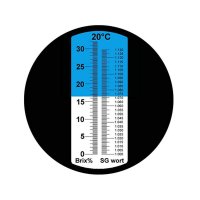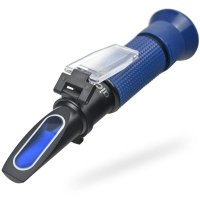Elysium82
Well-Known Member
- Joined
- Apr 5, 2021
- Messages
- 45
- Reaction score
- 8
Hey guys,
So, it feels like ATC (temperature adjustment) is a basic feature when it comes to refractometers(at least with the ones I have found so far).
However, there are tons of different types (depending on what you make or have), but I guess we just have to go for the one that says it is good for wort, but are there any other features we should be careful with?
1, I see a lot of no name (without any brand name) refractometers. Are they equally good as the similarly priced ones that come with a brand name? I dont know if, say, they break earlier or come with lower quality.
2, Does the actual scale they come with matter? I will insert a photo. This one shows the Brix and the SG too.. It feels super handy. No conversion is required then, but is SG measure as accurate as the Brix one?
So, it feels like ATC (temperature adjustment) is a basic feature when it comes to refractometers(at least with the ones I have found so far).
However, there are tons of different types (depending on what you make or have), but I guess we just have to go for the one that says it is good for wort, but are there any other features we should be careful with?
1, I see a lot of no name (without any brand name) refractometers. Are they equally good as the similarly priced ones that come with a brand name? I dont know if, say, they break earlier or come with lower quality.
2, Does the actual scale they come with matter? I will insert a photo. This one shows the Brix and the SG too.. It feels super handy. No conversion is required then, but is SG measure as accurate as the Brix one?




